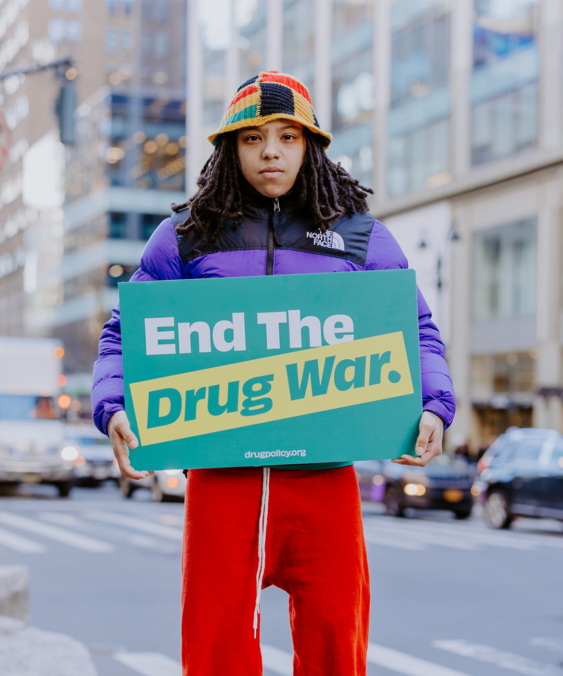
Tony Newman at 646-335-5384 or Bill Piper at 202-669-6430
On National Methamphetamine Awareness Day (November 30, 2006), doctors, public health experts, and drug policy reform advocates will call for more prevention and treatment services to counter drug abuse. A New PATH (Parents for Addiction Treatment and Healing), a San Diego-based organization, has teamed up with the Drug Policy Alliance and the California Society of Addiction Medicine to urge local, state, and national policymakers to focus on prevention and treatment efforts, which are shown to be more successful and cost-effective than punitive measures. National Methamphetamine Awareness Day is sponsored by the Department of Justice.
“Policymakers need to learn from the mistakes of the past. Our country cannot incarcerate its way out of the meth problem,” said Bill Piper, director of national affairs for the Drug Policy Alliance. “Punitive policies have been tried and have failed. And not just with methamphetamine, but cocaine, heroin, marijuana, and numerous other drugs – including alcohol. The quickest, cheapest, and most effective way to undermine drug markets and reduce drug abuse is to make treatment available to all who need it, whenever they need it, and as often as they need it.”
Past experience with the cyclical nature of drug abuse outbreaks, as well as an analysis of U.S. and international drug policies, make it clear that local, state and federal governments and the Native American nations should embrace a strong public health response to the growing problems associated with methamphetamine use among various populations. Several states are already leading the way.
California’s Proposition 36 is the nation’s most systematic public health response to the methamphetamine outbreak to date. The voter-approved initiative diverts approximately 35,000 drug law offenders from jail to drug treatment every year–over half of whom identify methamphetamine as their primary drug. In the last five years, Prop. 36 has helped tens of thousands of people improve their lives, increased public safety, and saved taxpayers hundreds of millions of dollars through reduced criminal justice expenses.
“California has the country’s largest diversion program for people who suffer from addiction to methamphetamine. Prop. 36 helps to improve lives, reunite families and reduce the burden on the state’s overcrowded prisons,” said Margaret Dooley, San Diego-based Prop. 36 Coordinator for the Drug Policy Alliance. “Prop. 36 also has provided irrefutable evidence that methamphetamine addiction is treatable.”
New Mexico, long at the forefront of effectively dealing with drug-related problems, has crafted a statewide methamphetamine strategy that seamlessly links prevention, treatment, policing and harm reduction. It is a model for how policymakers can bring key stakeholders together, foster interagency collaboration and implement an effective methamphetamine strategy. The state’s strategy includes ensuring that standardized reporting and evaluation tools are used by all prevention agencies to enhance evaluation efforts, leveraging research grants to help fund treatment with traditional and alternative modalities, increasing access to syringe exchange and infectious disease testing, and reducing criminal activity by increasing funding for drug treatment.
Advocates of treatment continue to be concerned that elected officials and the media are spreading myths that meth addiction is untreatable. In an open letter to the media last year, dozens of treatment professionals warned that the myth that abuse of methamphetamine cannot be treated is causing great harm.
A 2003 survey of treatment approaches published in the Journal of Substance Abuse Treatment concluded “that clients who report methamphetamine abuse respond favorably to existing treatment.” A study in Washington State found that “there were no statistically significant differences across a series of outcomes between clients using methamphetamine and those using other substances.” In fact, there have been at least twenty recent studies showing the efficacy of methamphetamine treatment.
Gretchen Burns Bergman, co-founder and executive director of A New PATH, said “It is tempting for our leaders to talk ‘tough on crime’ and to respond to addiction through increased criminal penalties. But, as the mother of two sons who have struggled with addiction and with the criminal justice system, I know that treatment, not incarceration, is what makes positive change–and recovery–possible.”
Dr. Shannon Chavez, medical director at UCSD Outpatient Psychiatric Services and member of the California Society of Addiction Medicine (CSAM), explained “Addiction is recognized as a medical illness by every medical association in the country, and addiction is treatable. Although treatment techniques differ depending on the drug type (such as with depressants like alcohol or stimulants like cocaine or methamphetamine), we must remember that the underlying condition is addiction, not the specific drug, and that our responsibility is to treat the person suffering from any addiction.”
According to CSAM’s Recommendations to Improve California’s Response to Methamphetamine issued earlier this year, “The media has stimulated a wave of public attention and uproar. But, from the perspective of addiction medicine, little has changed. Methamphetamine is one of many stimulants, with a few unique features, and methamphetamine abuse can be treated with the same level of success as other drug addictions.”
“For too long policymakers have been pulling the wool over voters’ eyes with ineffective – but symbolically dramatic – policies like cold medicine restrictions and methamphetamine offender registries, instead of investing in drug treatment,” said Piper. “As long as there is a demand for methamphetamine, there will always be a supply to meet it. Policymakers need to start treating drug abuse as a health issue, not a criminal justice issue.”
Learn more about Prop. 36 at http://www.Prop36.org. Read CSAM’s 2006 report on methamphetamine at http://csam-asam.org/pdf/misc/Meth_Recommedations.pdf. Read UCLA’s Prop. 36 analyses at http://www.uclaisap.org/prop36/html/reports.html.


Notifications